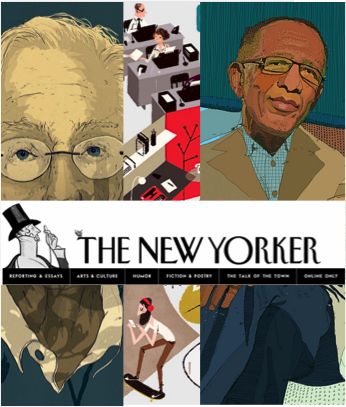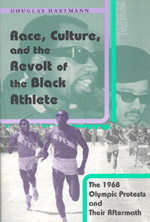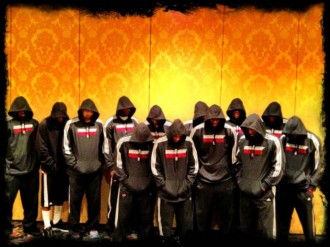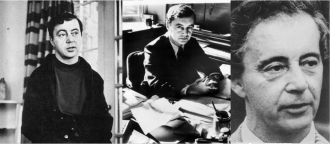 The ASA kindly asked me to write up a little welcome for the incoming Contexts editorial team for the most recent issue of Footnotes. Since TSP is the online home of contexts.org, I’m a former co-editor of the magazine, and Phil Cohen and Syed Ali are fellow sociological travelers, how could I resist?
The ASA kindly asked me to write up a little welcome for the incoming Contexts editorial team for the most recent issue of Footnotes. Since TSP is the online home of contexts.org, I’m a former co-editor of the magazine, and Phil Cohen and Syed Ali are fellow sociological travelers, how could I resist?
Extra! Extra! Read all about it! The new editors for Contexts, the ASA’s one-of-a-kind, accessible to a general audience publication, have been chosen. They are Philip N. Cohen of the University of Maryland and Syed Ali of Long Island University. Cohen and Ali will take their turn at helm beginning in January. They bring with them big ideas about sociology, tons of energy and experience with public engagement, and their own distinctive (and sometimes irreverent) sensibilities.
About the New Editors
Philip Cohen is Professor of Sociology at the University of Maryland-College Park, where he received his PhD in 1999. He returned to his alma mater in 2012 after stints at University of California-Irvine and the University of North Carolina-Chapel Hill. Cohen specializes in family demography, gender inequality, and labor market disparities and has published widely and in all the leading journals of the field. His most recent writing has been devoted to communicating sociological insights to bigger and broader audiences, largely through his prolific and widely read “Family Inequality” blog, which can be found at familyinequality.com, and his forthcoming book, The Family: Diversity, Inequality and Social Change (W.W. Norton & Co.).Before settling on sociology, Cohen explored unsuccessful careers as a bagel server, journalist, and rock star.
Before settling on sociology, Cohen explored unsuccessful careers as a bagel server, journalist, and rock star. As his online followers and fan club well know, Cohen spends a great deal of his free time blogging. Instead of the rock-star life he once imagined, he now muses about families, inequality, sociology, and demography. “I enjoy research, teaching, and learning, and I’m happy to pursue those interests while satisfying my desire to argue about politics on the Internet,” said Cohen, who lives with his wife and two children in Takoma Park. He is also proud to have always worked at state universities (though he does admit to applying for a few private school jobs along the way).
Syed Ali is Associate Professor of Sociology at Long Island University-Brooklyn. His research interests center around migration, assimilation, ethnicity, and religion. He has conducted ethnographic research among Muslims in Hyderabad, India, South Asians in the United States, and migrant workers in Dubai. Ali is perhaps best known as the author of Dubai: Gilded Cage (Yale University Press 2010) but also has a new book (co-authored with yours truly) due out in January under the title Migration, Incorporation, and Change in an Interconnected World (Routledge/Taylor-Francis).Once a late-night country radio DJ, Ali now moonlights as a potter and Ultimate Frisbee player.
Ali spent his early childhood in rural West Virginia, but was uprooted to New York City once his parents realized, as he put it, “we were brown.” He returned to the South for graduate work at the University of Virginia, and then bounced back to Brooklyn where he now lives with his wife and two children. Once a late-night country radio DJ (under the unassuming moniker “John Thomas”), Ali now moonlights as a potter and Ultimate Frisbee player. His team finished 6th in the men’s grandmasters (40+) division at the recent national championships in Florida. More important than the result, however, Ali reports that “no one got hurt.”
Plans
Under Cohen and Ali’s leadership,
Contexts will rely on a diverse editorial team that will include sociologists from around the country, media professionals of national and international stature, and graduate students from the University of Maryland’s Sociology Department. Their section editors will include Szonja Ivester, Andrew Lindner, Shehzad Nadeem, Nathan Palmer, and Allison Pugh. The incomparable Letta Page will be returning for another stint as senior managing editor, alongside Meg Austin Smith, who will serve as managing editor.
“No jargon, no long, deathly boring articles. Contexts is where non-sociologists should learn what we do, and sociologists should enjoy their peers’ findings.”
In the tradition established by founding editor Claude Fischer, Ali and Cohen will continue to emphasize accessible, engaging writing, even inviting writers from outside the ranks of the academy who have distinctive sociological visions to contribute. As Cohen puts it, his goal in taking over the editorship of Contexts is “to get great writing about sociology [to] everyone who is interested, might be interested, or should be interested in reading it.” Ali adds, “No jargon, no long, deathly boring articles. Contexts is where non-sociologists should learn what we do, and sociologists should enjoy their peers’ findings.” They welcome any and all ideas, proposals, and submissions.
One tweak that Ali and Cohen envision is alternating the current “Viewpoints” feature with a “Fighting Words” column, allowing the magazine to explore topics that are core in the discipline but where research results and interpretations are varied and even divisive. The new editors are also committed to making
Contexts more global in terms of content, contributors, and distribution. “Sociology,” as Ali puts it, “is an international field and we sociologists do research internationally. Our writing pool and readership need to reflect this.”
With Ali and Cohen at the helm, sociologists can expect that this unique and award-winning publication will continue to be our vehicle for bringing empirical research and grounded insight about social life to broader public visibility and influence—by making our work fascinating, relevant, and accessible to all.
One thing that won’t change, I’m happy to report, is that online hosting for the magazine will continue to be provided by TheSocietyPages.org, the open-access sociology website that Chris Uggen and I launched a few years back on the heels of our turn at the editor’s desk.
In discussing this profile, Cohen noted that “truth is obviously most important,” but also allowed that he “wouldn’t mind” a little flattery along the way. This is a typically self-depreciating example of the humor and good cheer Cohen and Ali bring to all their work, and perhaps not such a bad summary of what they will do for sociology in and through Contexts. With Ali and Cohen at the helm, sociologists can expect that this unique and award-winning publication will continue to be our vehicle for bringing empirical research and grounded insight about social life to broader public visibility and influence—by making our work fascinating, relevant, and accessible to all.
For more information on Cohen, see www.terpconnect.umd.edu/~pnc/PNC-CV.pdf, and for information on Ali, see myweb.brooklyn.liu.edu/sfali/Welcome.html.
– See more at: http://www.asanet.org/footnotes/septoct14/contexts_0914.html#sthash.LtiJ45tT.dpuf







 The ASA kindly asked me to write up a little welcome for the incoming Contexts editorial team for the most recent issue of
The ASA kindly asked me to write up a little welcome for the incoming Contexts editorial team for the most recent issue of